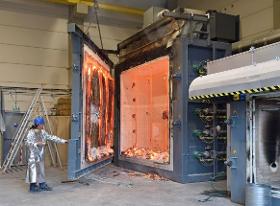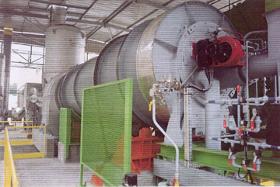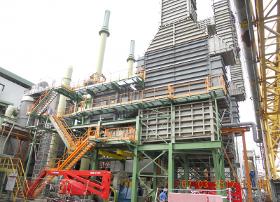- europages
- >
- COMPANIES - SUPPLIERS - SERVICE PROVIDERS
- >
- gas treatment
Results for
Gas treatment - Import export

BTF
Belgium
BTF designs and builds ovens for performance of fire resistance testing according several standards. We have experience in the construction of vertical, horizontal and combi ovens which are built for fire resistance trials –under controlled pressure and temperature. The furnaces are equipped with all the instruments needed for the monitoring, the acquisition and the processing of data. We continuously develop our own software using Siemens material for the automatic monitoring of the ovens during tests on the basis of a programmed curve and with data measured by the various sensors and probes (temperature, pressure, oxygen, radiation, deflection,…) The ovens can be flexible and equipped with a loadbearing system, an outdoor chimney with an extraction or treatment of flue gas, walkways, camera, deflection measurement system, etc. We also manufacture frames, removable walls and caps to modulate space in ovens according to tested samples. We move, adapt and renovate existing installation.
Request for a quote
EUROPEM
Belgium
A fluidised bed incinerator is the technology of choice for the combustion of many sludge streams or solid waste streams with a high moisture content. In a fluidised bed reactor, an inert material, typically calibrated quartz sand, is fluidised by blowing air through the bed. The sand bed expands and provides an ideal medium for the mixing of waste with combustion air. Because the fluidised bed is maintained at an elevated temperature, typically between 650°C and 800°C the water evaporates and volatile organic compounds mix with combustion air whilst escaping from the fluidised bed. EUROPEM fluidised bed reactors are bubbling fluidised beds with high turbulence. Different feeding systems can be supplied ranging from feeding screws and over spreader stokers to injection lances. Key Features Turbulent bubbling fluidized bed of inert material Different feeding systems for solid waste, waste liquids and waste gases Can be operated in a reducing or oxidising environment Key Advantages - Robust and flexible design to burn sludge or solid waste with high moisture content – Stable combustion process of waste with varying moisture content over time – Proven technology – Destruction efficiency over 99.99% and less than 1% carbon in the ashes – Low NOx and CO emissions possible – Flue gas treatment train needed to meet acid, heavy metal, dust and PCDD/F emission levels
Request for a quote
EUROPEM
Belgium
Rotary kiln incinerators are the workhorse of industry to burn solid waste in combination with sludge, waste gas and/or waste liquids and where the rotating motion transports the solid burning waste through the incinerator. Ashes are collected at the end of the rotating kiln and then combustion gases are completely oxidised in the static post combustion chamber. Rotary kiln incinerators typically feature different types of solid waste feeding systems for the bulky solid waste, containers and drums such as feeding screws and ram feeders. Waste gases and liquids are either injected into the rotary kiln, or the (vertical) post combustion chamber behind the rotary kiln. It provides for flexible and versatile incineration technology, but is characterised by a lower thermal efficiency with the associated higher operating and maintenance costs. Key Features Rotary kiln furnace with pre-set inclination and variable rotation speed. Labyrinth type seal with cooling and/or flushing with inert gas Different feeding systems for solid waste, waste liquids and waste gases Can be operated in a reducing or oxidizing environment Different drive mechanisms such as chain or direct drive, depending on the size of the kiln and the capacity Key Advantages - Robust and flexible design to burn a wide range of waste fractions – Proven technology – Destruction efficiency over 99.999% and less than 3% carbon in the ashes – Low NOx and CO emissions possible – Flue gas treatment train needed to meet acid, heavy metal, dust and PCDD/F emission levels
Request for a quote
HAMON
Belgium
Besides primary measures, Selective Catalytic Reduction (SCR) is the most effective method for controlling nitrogen oxide emissions (NOx) from combustion sources. It is a commercially proven flue gas treatment technology that has been demonstrated to remove over 98 percent of the NOx contained in combustion system exhaust gas. The catalyst is at the heart of the SCR process. It creates a surface for reacting the NOx and ammonia, and allows for the reaction to occur within typical flue gas temperature ranges.Hamon uses a similar technology to reduce also VOC or CO content.Thorough knowledge in the design of all types of heat recovery systems including heat exchangers made of glass or fluoroplastic tubes to de-saturate the flue gas downstream a wet scrubbing system allows for minimum energy consumption when the flue gas needs to be heated.
Request for a quoteDo you sell or make similar products?
Sign up to europages and have your products listed
Results for
Gas treatment - Import exportNumber of results
4 ProductsCompany type
Category